Japan's large-scale reforms in the XIX century
• Large-scale reform of Japan in the XIX century
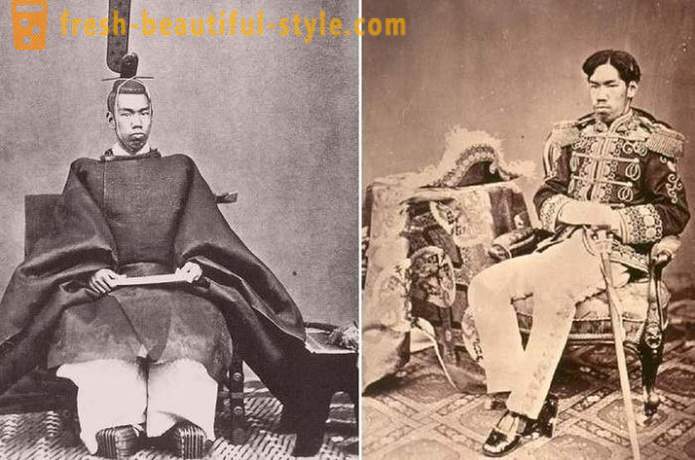
The Emperor Meiji - Japan's ruler during the 1867-1912 biennium.
Today, Japan is one of the most developed countries in the world. A total of 150 years ago, Japan was an agrarian outskirts, isolated from all outside influence. The situation is fundamentally managed to break the Emperor Meiji. He not only changed the kimono to the European military uniform, but also to turn Japan into a powerful state.
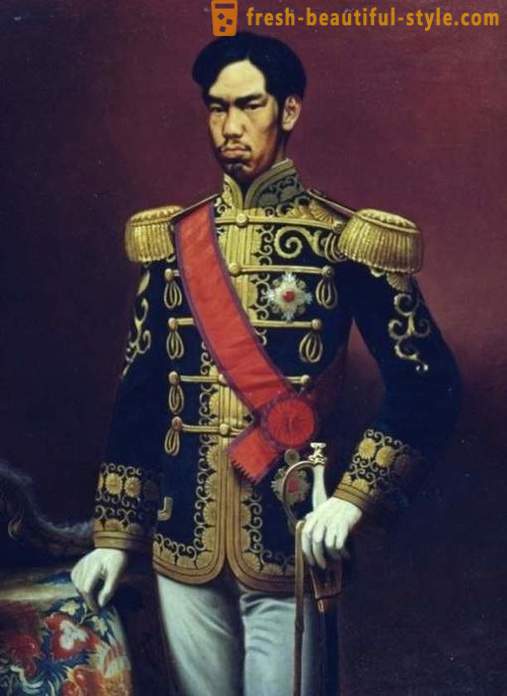
Snapshot of the Japanese Emperor Meiji. | Photo: cdnimg.rg.ru.
In the middle of the XIX century, Japan was a pitiable sight. Consisting of 250 feudal domains, backward in terms of technology, isolated from the outside world - it seemed that the country is stuck in a state of a thousand years ago. Everything changed with the beginning of the reign of the Meiji Emperor.
The heir to the throne, was born on November 3, 1852. Young Mutsuhito bore the title of Prince, though his mother Yoshiko was merely a concubine. The fact that all the other sons of the emperor died in infancy, so Mutsuhito prepared for the role of the ruler of the country and the "living god on earth." When the young Mutsuhito became emperor, he chose the path called "Meiji", which means "enlightened rule" (in Japan called intravital monarchs not names, and on the rule of).
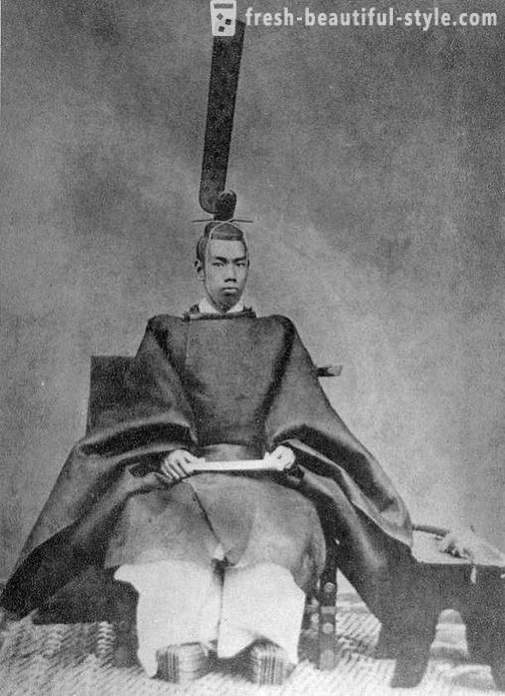
The young Emperor Meiji in ceremonial robes, 1872. | Photo: ru.wikipedia.org. At that time, the Emperor of Japan is not actually engaged in public affairs. Their duties included carrying out of rituals aimed at the prosperity of the country and protect it from crop failures and other disasters. Until the middle of the XIX century Emperors almost never left the palace in Kyoto Goso. The only exception was the fires in the palace or the death of the ruler.

Last Shogun Yoshinobu Tokugawa Japan. | Photo: esacademic.com.
In fact, generals have ruled the country-lords, called the shogun. By the time of birth Mutsuhito head of state was the shogun of the Tokugawa dynasty, which ruled from the XVII century.
In the 1840s-1860s. Western countries began to enter the markets of China, Korea and Japan. The island country for a long time did not want to establish trade relations with foreigners, but still she had to obey. Against American and European fleet Japanese could do little. Start of commercial relations was laid, but the economy began to deteriorate instead of progress in the country. Growing dissatisfaction with the rule of the Tokugawa shogunate.
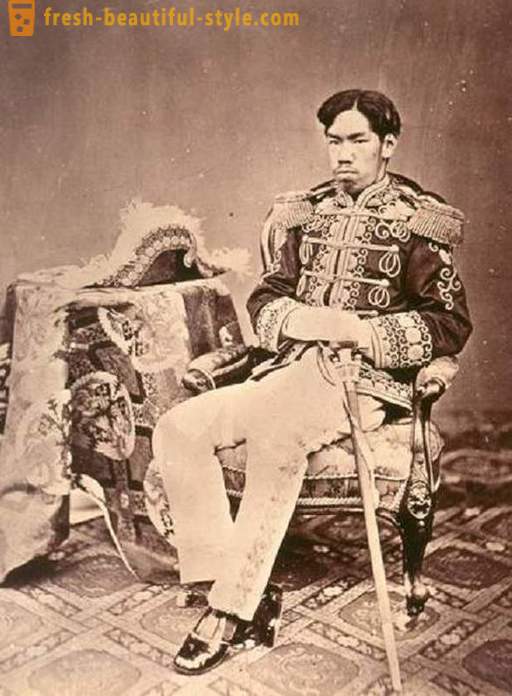
A young Emperor Meiji. | Photo: ru.wikipedia.org.
In 1867, after the next increase taxes shogun in Kyoto discontented aristocracy began to prepare a revolt. The rebels have focused on the fact that it is time to "return to the roots", ie. E. To the one-man rule of the emperor. One of the court wrote: "In heaven can not be two suns. On the ground can not be two sovereigns. No country can not survive if the government decrees do not come from a single source. So I wish that we, acting decisively destroyed the shogunate. " The leader of the coup, known as Restoration, became Meiji.
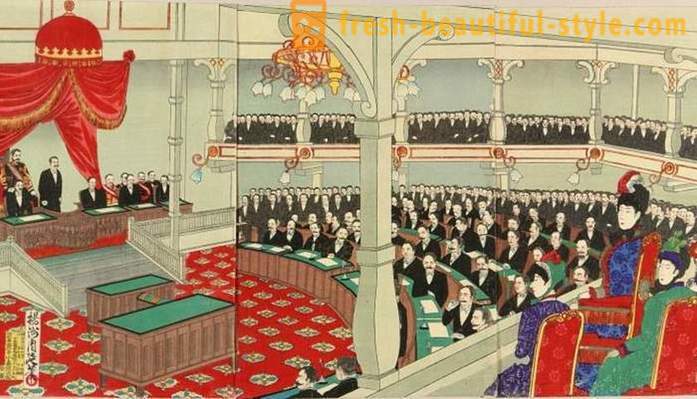
The meeting of the Japanese parliament in 1890. | Photo: ru.wikipedia.org.
During the reign of Emperor Meiji of Japan from an agrarian country into a great power. Real power was concentrated in the hands of the emperor, a few nobles and former samurai. reforms have been carried out in all sectors of the country. Improved education system, to develop trade with Europe and America, created a new army and navy for the German and UK samples.
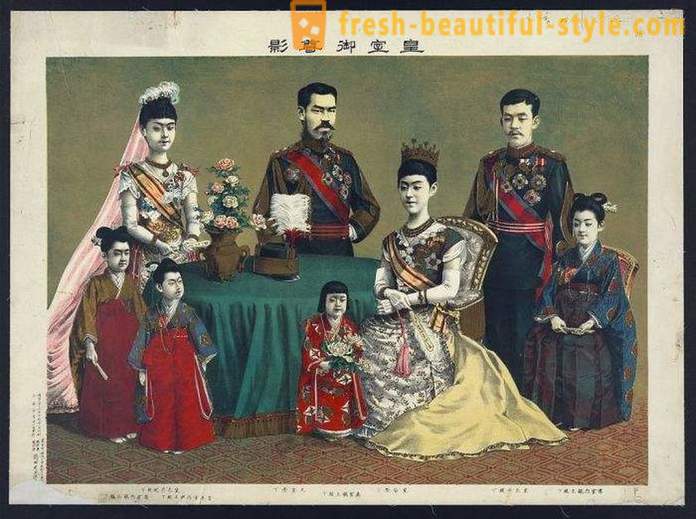
The family of Emperor Meiji. | Photo: memory.loc.gov.
The reforms were carried out all over the place, they did not pass and the Emperor personally. Meiji was his appearance to show the changes. If in previous years, he only wore the traditional robes, he was pulling her hair in a bun and black teeth, the appearance of the emperor radically changed after 1873. He had changed into a European military uniform, he took a short cut, grown a mustache. Gradually, the court also changed their vestments.
All the Japanese emperors were considered the descendants of the ancient deities, so the common people were forbidden to look at them. It was thought that can be blinded by the internal grace of light emitted by the governor. Meiji was the first ruler who allowed to write two of his portrait and take photos. Moreover, he has appeared at public ceremonies.

Japanese Emperor Meiji in 1890. | Photo: de.academic.ru. When Emperor Meiji died, his funeral procession turned into a multi-million people who wanted one last time to see their ruler. This fact became the first in the history of Japan, because with the former emperor was not the case. Before their death became known a few weeks after the actual death, and the funeral was attended by only a few close people.
After the death of Emperor Meiji in 1912, an article appeared in the New York Times, covered the event. In the end it was written: "The contrast between what was going ahead of the funeral cart, and what went on behind her, was really amazing. In front of her was old Japan, after it - the new Japan. "
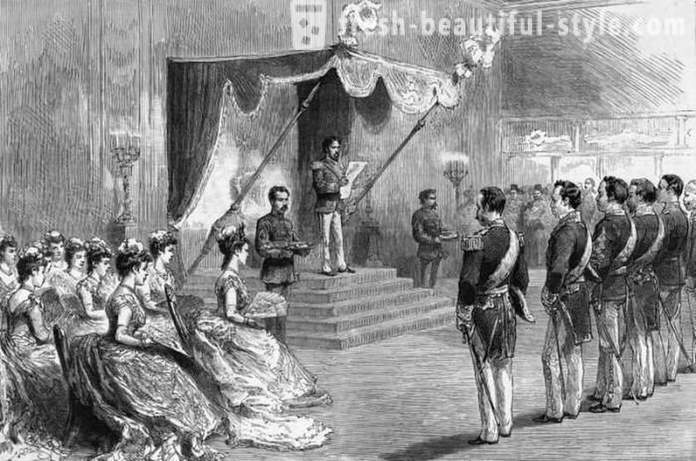
The Emperor Meiji in front of his subjects. | Photo: aboutjapan.japansociety.org.
Despite its progressive nature, the Japanese protective of the traditions. In the country of the Rising Sun to the current Emperor Akihito is still treated as a living God.













































